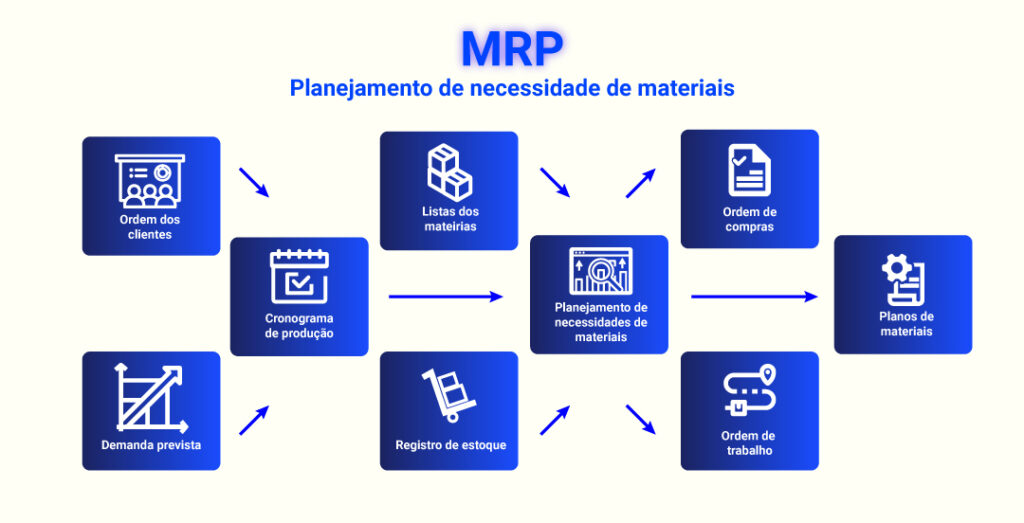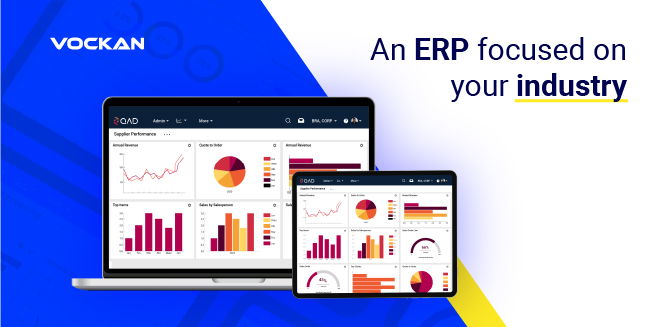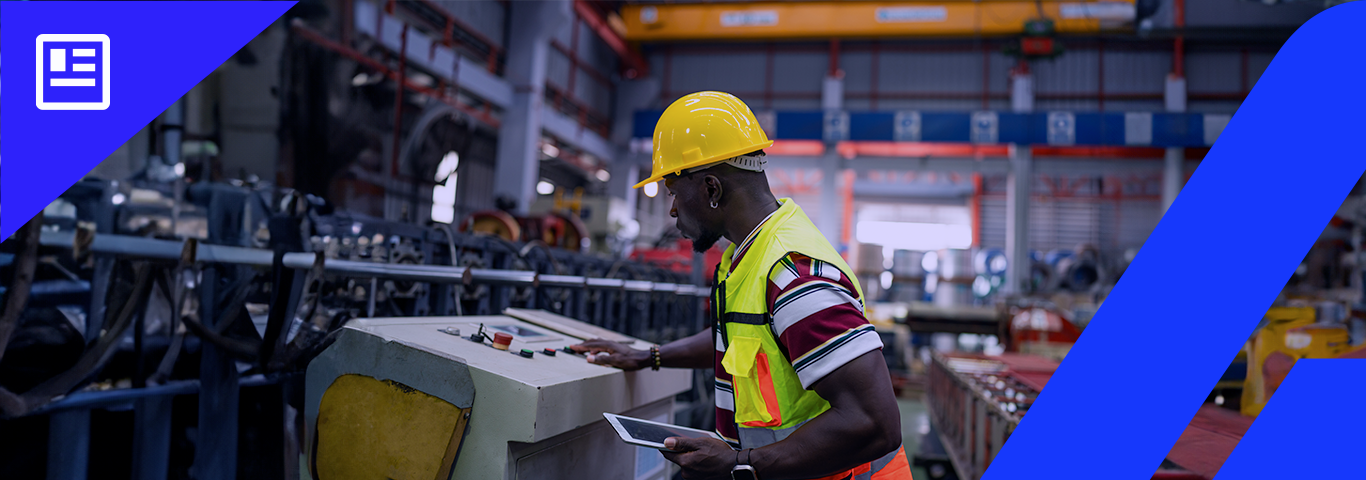Are you in control, or are you just putting out fires?
Amidst the hustle and bustle of everyday life, many companies continue to operate on autopilot: deliveries happening, orders going out, teams working… but with no time to breathe, much less think strategically. If the results appear, great—but are they achieving their full potential?
The difference between a company that survives and one that grows sustainably often lies in the ability to plan. And we’re not talking about guesswork or isolated spreadsheets. We’re talking about integrated vision, predictability, and real control.
This is where MRP comes in—a methodology that transforms the chaos of operations into an organized, connected, and intelligent system. Whether it’s to avoid bottlenecks, reduce waste, or improve delivery times, MRP can be what your company needs to take the next step.
In this article, we show how MRP can help you make more confident decisions, align production with demand, and save time and margin in an increasingly competitive market.
If you still rely on improvisation and course correction to keep production running smoothly, this content is for you.
What is MRP? And why it changes everything in your operation?
MRP stands for Material Requirements Planning.
It’s a system—usually integrated with software—that automatically calculates:
- What you need to produce;
- Which materials you need to purchase;
- When you need to purchase;
- And how long each production step will take.
Essentially, an intelligence center that aims to integrate processes and departments and optimize input planning. MRP can be the ideal solution to revolutionize management and enhance your industry.

MRP Calculation
Imagine a car manufacturer suffering from production line bottlenecks: sometimes there’s a product shortage, sometimes there’s a surplus of electronic components that sit in inventory for weeks. The result? Delayed deliveries, high storage costs, and rework to constantly reschedule production.
After implementing MRP, this same manufacturer was able to reduce idle inventory, eliminate shortages of critical components, and even increase monthly production, without hiring new employees or opening extra shifts.
How is this possible?
The secret lies in the structured MRP calculation, which is based on three fundamental pieces of information:
- Order demand (firm and forecast);
- Bill of Materials (BOM);
- Updated parts inventory balance.
MRP calculation provides clarity on purchasing lead time, helps align strategic suppliers with the production schedule, and improves accuracy in delivery dates to the end customer—essential in the automotive industry, where deadlines and quality standards are non-negotiable..

Read also: PCM in Industry: How to Reduce Failures and Increase Efficiency
MRP 1 vs. MRP 2 – What’s the Difference?
MRP can be divided into two parts: MRP 1 and MRP 2. Both solutions are very important and complementary and are part of production management.
MRP 1 focuses on meeting the demand for materials needed for manufacturing, showing the company what it has and what it needs.
MRP 2, on the other hand, shows the industry’s manufacturing capacity, providing information on machinery, material flow, and production aspects (orders, inventory tracking, and capacity assurance).
MRP 2 can also indicate manufacturing capacity by time, how many people need to work at each time, and the start, start, and end times for each machine activity.
Who is MRP suitable for?
Regardless of the type of product your company manufactures—whether a simple item or equipment with multiple components and assembly levels—the challenge is the same: ensuring the availability of the right materials at the right time to meet customer commitments.
And the greater the variety of products and the complexity of production processes, the greater the urgency of having a tool that orchestrates all of this accurately.
Manufacturing companies that handle large volumes, multiple production steps, and the need for efficient inventory control simply cannot remain competitive without a robust MRP. It is the link between what was promised to the customer and the factory’s actual capacity to deliver.
According to SEBRAE, “management software, such as MRP, brings a series of benefits to all areas and companies, especially to industries, promoting greater overall business control and contributing to planning, organization, and decision-making.”
If your operation involves continuous production, custom assembly, component replenishment, or any scenario that relies on inputs and deadlines, MRP is not only useful—it’s essential for ensuring productivity, predictability, and scalability.
When should you implement MRP in your industry?
When it comes to when MRP should be used in a manufacturing industry, the answer is: as soon as possible.
After all, if your industry doesn’t yet have a system that calculates everything necessary to manufacture a product, your company is probably losing money.
To ensure your industry needs a solution like MRP, be aware of the following warning signs: a large number of products with complex structures, problems controlling raw material quantities, high inventory levels, frequent delivery delays, constant changes in production, etc.
If inventory balances are unreliable, or if product structures are not accurately recorded, or if manufacturing processes are not recorded, your company is not yet ready to implement MRP.
Before using MRP, training is mandatory to ensure proper implementation and understanding. MRP must be a “living being” within an organization, as it is constantly changing, as industry requirements also change.
Want to know if your industry needs MRP? Look for these signs:
- It has a complex product structure;
- It experiences delivery delays;
- It has excessively high inventories (or unexpectedly depleting them);
- It has difficulty planning production based on actual demand;
- Costs are rising without clear control.
If you answered “yes” to two or more of these questions, you urgently need to implement MRP.

Read also: PDCA Cycle: How to Improve Processes in Industry
What your industry gains by implementing MRP
Reduced operating costs
MRP avoids unnecessary purchases, reduces idle inventory, and reduces material waste. This means less tied up capital and more efficient use of factory resources.
Increased production efficiency
With MRP, production is synchronized: the right materials arrive at the right time, to the right machine, at the right pace. This reduces downtime, eliminates rework, and improves capacity utilization.
Complete inventory control
You gain complete visibility into what’s in stock, what’s out of stock, what needs to be purchased, and when. This prevents stockouts and excess inventory, two of the factory floor’s most common enemies.
On-time deliveries and greater customer reliability
By planning based on actual demand and supply times, MRP ensures that orders are fulfilled on time. This strengthens customer relationships and prevents fines or cancellations.
Predictable and Secure Growth
With reliable information on demand, production capacity, and material consumption, your industry can grow in a controlled manner, anticipating bottlenecks and making decisions based on data, not assumptions.
Difference Between MRP and ERP
While MRP focuses on production, ERP (Enterprise Resource Planning) is broader—it also connects areas such as finance, HR, maintenance, and logistics.
Because it’s a more complex and advanced system, ERP can integrate MRP 1 and MRP 2 in the same virtual environment. Therefore, this system, in addition to displaying inventory flow, also includes information on cash flow, maintenance, and accounting.
Conclusion: What do you do now?
You’ve already understood that the problem isn’t just a lack of raw materials or production delays. The problem is the lack of an intelligent system that anticipates these risks.
And that system is called MRP.
Now, you have two paths:
- Return to chaos and continue putting out fires,
- Or implement a system that will organize your operation, cut costs, and increase your delivery — with predictability.
Discover QAD BR+ ERP
Want to escape operational chaos and master your production with a system ready for Brazilian industry?
QAD BR+ is an ERP with integrated MRP, tailored for the industrial sector.
Fully adapted to Brazil’s fiscal, tax, and production realities, it’s what your factory needs to stop chasing losses and start producing with intelligence, control, and true scalability.
- Material, inventory, and production capacity management in one place;
- Fast implementation, local support, and global best practices;
- Everything your business needs to grow safely.
Schedule a conversation with a Vockan specialist now.










